Nanostructured Metal Oxide Semiconductors towards Greenhouse Gas Detection
Abstract
:1. Introduction
- Global warming,
- Intense droughts,
- Severe storms,
- Glaciers melting,
- Depletion of the ozone layer, which can occur by emission of CCl4, CFCs and HCFCs,
- Changing the cycle of plant life and rain patterns,
- Rising sea levels and warmer oceans,
- Changing the lives of wildlife species.
2. Sensing Mechanism and Parameters of Gas Sensors
3. Nanostructured Metal Oxide Semiconductor (NMOS)-Based Greenhouse Gas Sensors
3.1. Sensing of Carbon Dioxide (CO2)
3.2. Sensing of Methane (CH4)
3.3. Sensing of Nitrous Oxide Gas
3.4. Fluorinated Gases (HFCs, PFCs and SF6)
4. Conclusions and Perspectives
Author Contributions
Funding
Informed Consent Statement
Acknowledgments
Conflicts of Interest
References
- Villar, J.C.; Hidalgo, S.L.; Penela, A.C.; Meijide, B.G. A New Perspective for Labeling the Carbon Footprint against Climate Change. In Global Warming—Impacts and Future Perspective; Bharat, R.S., Ed.; InTech: Rijeka, Croatia, 2012. [Google Scholar]
- Solomon, S.; Qin, D.; Manning, M.; Chen, Z.; Marquis, M.; Averyt, K.B.; Tignor, M.; Miller, H.L. Climate Change 2007: The Physical Science Basis. Contribution of Working Group I to the Fourth Assessment Report of the Intergovernmental Panel on Climate Change; Cambridge University Press: Cambridge, UK; Cambridge University Press: New York, NY, USA, 2007. [Google Scholar]
- World Meteorological Organization. WMO Greenhouse Gas Bulletin, No. 16; WMO: Geneva, Switzerland, 2020. [Google Scholar]
- Santhanam, K.S.V.; Ahamed, N.N.N. Greenhouse Gas Sensors Fabricated with New Materials for Climatic Usage: A Review. ChemEngineering 2018, 2, 38. [Google Scholar] [CrossRef] [Green Version]
- Stocker, T.F.; Qin, D.; Plattner, G.-K.; Tignor, M.B.M.; Allen, S.K.; Boschung, J.; Nauels, A.; Xia, Y.; Bex, P.M.M.V. Climate Change 2013 The Physical Science Basis: Working Group I Contribution to the Fifth Assessment Report of the Intergovernmental Panel on Climate Change; Cambridge University Press: Cambridge, UK, 2013. [Google Scholar]
- Sonker, R.K.; Sabhajeet, S.R.; Yadav, B.C. TiO2–PANI nanocomposite thin film prepared by spin coating technique working as room temperature CO2 gas sensing. J. Mater. Sci. Mater. Electron. 2016, 27, 11726–11732. [Google Scholar] [CrossRef]
- Rauh, F.; Schwenk, M.; Pejcic, B.; Myers, M.; Ho, K.-B.; Stalker, L.; Mizaikoff, B. A mid-infrared sensor for the determination of perfluorocarbon-based compounds in aquatic systems for geosequestration purposes. Talanta 2014, 130, 527–535. [Google Scholar] [CrossRef]
- Trudinger, C.M.; Fraser, P.J.; Etheridge, D.M.; Sturges, W.T.; Vollmer, M.K.; Rigby, M.; Martinerie, P.; Mühle, J.; Worton, D.R.; Krummel, P.B.; et al. Atmospheric abundance and global emissions of perfluorocarbons CF4, C2F6 and C3F8 since 1800 inferred from ice core, firn, air archive and in situ measurements. Atmos. Chem. Phys. 2016, 16, 11733–11754. [Google Scholar] [CrossRef] [Green Version]
- US Energy Information Administration (EIA). Energy and the Environment Explained Greenhouse Gases; US Energy Information Administration (EIA): Washington, DC, USA, 2021. [Google Scholar]
- Berrou, A.; Raybaut, M.; Godard, A.; Lefebvre, M. High-resolution photoacoustic and direct absorption spectroscopy of main greenhouse gases by use of a pulsed entangled cavity doubly resonant OPO. Appl. Phys. A 2009, 98, 217–230. [Google Scholar] [CrossRef]
- PBL Netherlands Environmental Assessment Agency. Growth of 1.1% in Global Greenhouse Gas Emissions in 2019. Available online: Https://www.pbl.nl/en/news/2020/growth (accessed on 5 December 2021).
- Oertel, C.; Matschullat, J.; Zurba, K.; Zimmermann, F.; Erasmi, S. Greenhouse Gas Emissions from Soils—A Review. Geo-Chem. 2016, 76, 327–352. [Google Scholar] [CrossRef] [Green Version]
- Gautam, Y.K.; Sharma, K.; Tyagi, S.; Ambedkar, A.K.; Chaudhary, M.; Pal Singh, B. Nanostructured Metal Oxide Semicon-ductor-Based Sensors for Greenhouse Gas Detection: Progress and Challenges. R. Soc. Open Sci. 2021, 8, 201324. [Google Scholar] [CrossRef]
- Meld. St. Longship—Carbon Capture and Storage. Available online: https://www.regjeringen.no/en/dokumenter/meld.-st.-33-20192020/id2765361/ (accessed on 5 December 2021).
- Olaniyi, O.A.; Ojekunle, Z.O.; Amujo, B.T. Review of Climate Change and Its Effect on Nigeria Ecosystem. Int. J. Afr. Asian Stud. Open Access Int. J. 2013, 1, 57–65. [Google Scholar]
- Jaaniso, R.; Kiang Tan, O. Semiconductor Gas Sensors; Woodhead Publishing Series in Electronic and Optical Materials; Woodhead Publishing Limited: Oxford, UK, 2013. [Google Scholar]
- Arshak, K.; Moore, E.; Lyons, G.M.; Harris, J.; Clifford, S. A review of gas sensors employed in electronic nose applications. Sens. Rev. 2004, 24, 181–198. [Google Scholar] [CrossRef] [Green Version]
- Shankar, P.; Rayappan, J.B.B. Gas Sensing Mechanism of Metal Oxides: The Role of Ambient Atmosphere, Type of Semicon-ductor and Gases—A Review. Sci. Lett. J. 2015, 4, 126. [Google Scholar]
- Wetchakun, K.; Samerjai, T.; Tamaekong, N.; Liewhiran, C.; Siriwong, C.; Kruefu, V.; Wisitsoraat, A.; Tuantranont, A.; Phanichphant, S. Semiconducting metal oxides as sensors for environmentally hazardous gases. Sens. Actuators B Chem. 2011, 160, 580–591. [Google Scholar] [CrossRef]
- Fine, G.F.; Cavanagh, L.M.; Afonja, A.; Binions, R. Metal Oxide Semi-Conductor Gas Sensors in Environmental Monitoring. Sensors 2010, 10, 5469–5502. [Google Scholar] [CrossRef] [PubMed] [Green Version]
- Barsan, N.; Weimar, U. Conduction Model of Metal Oxide Gas Sensors. J. Electroceram. 2001, 7, 143–167. [Google Scholar] [CrossRef]
- Bapathi, K.S.R.; Pramod, H. Borse Review—Recent Material Advances and Their Mechanistic Approaches for Room Temperature Chemiresistive Gas Sensors. Electrochem. Soc. 2021, 168, 057521. [Google Scholar]
- Tofield, P.T.M.B.C. Solid State Gas Sensors; Adam Hilger: Bristol, UK, 1987. [Google Scholar]
- Sberveglieri, G. Gas Sensors; Kluwer Academic Publishing: Berlin, Germany, 1992. [Google Scholar]
- Azad, A.M.; Akbar, S.A.; Mhaisalkar, S.; Birkefeld, L.D.; Goto, K.S. Solid-State Gas Sensors: A Review. J. Electrochem. Soc. 1992, 139, 3690–3704. [Google Scholar] [CrossRef]
- Barsan, N.; Schweizer-Berberich, M.; Göpel†, W. Fundamental and practical aspects in the design of nanoscaled SnO2 gas sensors: A status report. Anal. Bioanal. Chem. 1999, 365, 287–304. [Google Scholar] [CrossRef]
- Kim, H.J.; Lee, J.H. Highly Sensitive and Selective Gas Sensors Using P-Type Oxide Semiconductors: Overview. Sens. Actuators B Chem. 2014, 192, 607–627. [Google Scholar] [CrossRef]
- Wang, C.; Yin, L.; Zhang, L.; Xiang, D.; Gao, R. Metal Oxide Gas Sensors: Sensitivity and Influencing Factors. Sensors 2010, 10, 2088–2106. [Google Scholar] [CrossRef] [Green Version]
- Yamazoe, N. New approaches for improving semiconductor gas sensors. Sens. Actuators B Chem. 1991, 5, 7–19. [Google Scholar] [CrossRef]
- Korotcenkov, G. New Trends and Technologies. In Handbook of Gas Sensor Materials: Properties, Advantages, and Shortcomings for Applications; Springer: New York, NY, USA, 2014; Volume 2. [Google Scholar]
- Korotcenkov, G. Conventional Approaches. In Handbook of Gas Sensor Materials Properties, Advantages and Shortcomings for Applications; Springer: New York, NY, USA, 2013; Volume 1. [Google Scholar]
- Dey, A. Semiconductor metal oxide gas sensors: A review. Mater. Sci. Eng. B 2018, 229, 206–217. [Google Scholar] [CrossRef]
- Nikolic, M.V.; Milovanovic, V.; Vasiljevic, Z.Z.; Stamenkovic, Z. Semiconductor Gas Sensors: Materials, Technology, Design, and Application. Sensors 2020, 20, 6694. [Google Scholar] [CrossRef] [PubMed]
- Korotcenkov, G.; Cho, B. Metal oxide composites in conductometric gas sensors: Achievements and challenges. Sens. Actuators B Chem. 2017, 244, 182–210. [Google Scholar] [CrossRef]
- Staerz, A.; Berthold, C.; Russ, T.; Wicker, S.; Weimar, U.; Barsan, N. The oxidizing effect of humidity on WO3 based sensors. Sens. Actuators B Chem. 2016, 237, 54–58. [Google Scholar] [CrossRef]
- Glebov, A.; Graham, A.P.; Menzel, A.; Toennies, J.P. Orientational ordering of two-dimensional ice on Pt(111). J. Chem. Phys. 1997, 106, 9382–9385. [Google Scholar] [CrossRef]
- Feibelman, P.J. Reactive Wetting: H2O/Rh(111). Phys. Rev. Lett. 2003, 90, 186103. [Google Scholar] [CrossRef] [PubMed]
- Kanazawa, E.; Sakai, G.; Shimanoe, K.; Kanmura, Y.; Teraoka, Y.; Miura, N.; Yamazoe, N. Metal oxide semiconductor N2O sensor for medical use. Sens. Actuators B Chem. 2001, 77, 72–77. [Google Scholar] [CrossRef]
- Krivetskiy, V.; Ponzoni, A.; Comini, E.; Badalyan, S.; Rumyantseva, M.; Gaskov, A. Selectivity Modification of SnO2-Based Materials for Gas Sensor Arrays. Electroanalysis 2010, 22, 2809–2816. [Google Scholar] [CrossRef]
- Patil, S.J.; Patil, A.V.; Dighavkar, C.G.; Thakare, K.S.; Borase, R.Y.; Nandre, S.J.; Deshpande, N.G.; Ahire, R.R. Semiconductor metal oxide compounds based gas sensors: A literature review. Front. Mater. Sci. 2015, 9, 14–37. [Google Scholar] [CrossRef]
- Basyooni, M.A.; Shaban, M.; El Sayed, A.M. Enhanced Gas Sensing Properties of Spin-coated Na-doped ZnO Nanostructured Films. Sci. Rep. 2017, 7, srep41716. [Google Scholar] [CrossRef] [Green Version]
- Available online: Https://Gml.Noaa.Gov/Webdata/Ccgg/Trends/Co2_data_mlo.Png (accessed on 5 December 2021).
- Available online: Https://Gml.Noaa.Gov/Ccgg/Trends/Mlo.Html (accessed on 5 December 2021).
- Cozzi, L. Energy and Air Pollution, World Energy Outlook Special Report OECD/IEA; International Energy Agency: Paris, France, 2016. [Google Scholar]
- Cole, S.; Ellen, E. New NASA Satellite Maps Show Human Fingerprint on Global Air Quality; National Aeronautical Space Admin-istration (NASA): Washington, DC, USA, 2015. [Google Scholar]
- Çolak, H.; Karaköse, E. Synthesis and Characterization of Different Dopant (Ge, Nd, W)-Doped ZnO Nanorods and Their CO2 Gas Sensing Applications. Sens. Actuators B Chem. 2019, 296, 126629. [Google Scholar] [CrossRef]
- Shohany, B.G.; Motevalizadeh, L.; Abrishami, M.E. Investigation of ZnO thin-film sensing properties for CO2 detection: Effect of Mn doping. J. Theor. Appl. Phys. 2018, 12, 219–225. [Google Scholar] [CrossRef] [Green Version]
- Hunge, Y.M.; Yadav, A.A.; Kulkarni, S.B.; Mathe, V.L. A Multifunctional ZnO Thin Film Based Devices for Photoelectrocat-alytic Degradation of Terephthalic Acid and CO2 Gas Sensing Applications. Sens. Actuators B Chem. 2018, 274, 1–9. [Google Scholar] [CrossRef]
- Habib, M.; Hussain, S.S.; Riaz, S.; Naseem, S. Preparation and Characterization of ZnO Nanowires and their Applications in CO2 Gas Sensors. Mater. Today Proc. 2015, 2, 5714–5719. [Google Scholar] [CrossRef]
- Aboud, A.A.; Al-Kelesh, H.; El Rouby, W.; Farghali, A.; Hamdedein, A.; Khedr, M.H. CO2 responses based on pure and doped CeO2 nano-pellets. J. Mater. Res. Technol. 2018, 7, 14–20. [Google Scholar] [CrossRef]
- Jeong, Y.-J.; Balamurugan, C.; Lee, D.-W. Enhanced CO2 gas-sensing performance of ZnO nanopowder by La loaded during simple hydrothermal method. Sens. Actuators B Chem. 2016, 229, 288–296. [Google Scholar] [CrossRef]
- Dhahri, R.; Hjiri, M.; El Mir, L.; Fazio, E.; Neri, F.; Barreca, F.; Donato, N.; Bonavita, A.; Leonardi, S.G.; Neri, G. ZnO: Ca Nanopowders with Enhanced CO2 Sensing Properties. J. Phys. D. Appl. Phys. 2015, 48, 255503. [Google Scholar] [CrossRef]
- Ghosh, A.; Zhang, C.; Shi, S.; Zhang, H. High temperature CO2 sensing and its cross-sensitivity towards H2 and CO gas using calcium doped ZnO thin film coated langasite SAW sensor. Sens. Actuators B Chem. 2019, 301, 126958. [Google Scholar] [CrossRef]
- Joshi, S.; Ippolito, S.J.; Periasamy, S.; Sabri, Y.M.; Sunkara, M. V Efficient Heterostructures of Ag@ CuO/BaTiO3 for Low-Temperature CO2 Gas Detection: Assessing the Role of Nanointerfaces during Sensing by Operando DRIFTS Technique. ACS Appl. Mater. Interfaces 2017, 9, 27014–27026. [Google Scholar] [CrossRef]
- Abdelmounaïm, C.; Amara, Z.; Maha, A.; Mustapha, D. Effects of molarity on structural, optical, morphological and CO2 gas sensing properties of nanostructured copper oxide films deposited by spray pyrolysis. Mater. Sci. Semicond. Process. 2016, 43, 214–221. [Google Scholar] [CrossRef]
- Deepa, S.; Kumari, K.P.; Thomas, B. Contribution of oxygen-vacancy defect-types in enhanced CO2 sensing of nanoparticulate Zn-doped SnO2 films. Ceram. Int. 2017, 43, 17128–17141. [Google Scholar] [CrossRef]
- Raulkar, K. Study on sensitivity of nano SnO2 -ZnO composites with and without PPy layer for sensing CO2 gas. Mater. Today. Proc. 2019, 15, 604–610. [Google Scholar] [CrossRef]
- Hsu, K.-C.; Fang, T.-H.; Hsiao, Y.-J.; Chan, C.-A. Highly Response CO2 Gas Sensor Based on Au-La2O3 Doped SnO2 Nano-fibers. Mater. Lett. 2020, 261, 127144. [Google Scholar] [CrossRef]
- Xiong, Y.; Zhang, G.; Zhang, S.; Zeng, D.; Xie, C. Tin oxide thick film by doping rare earth for detecting traces of CO2: Operating in oxygen-free atmosphere. Mater. Res. Bull. 2014, 52, 56–64. [Google Scholar] [CrossRef]
- Krishnakumar, T.; Jayaprakash, R.; Prakash, T.; Sathyaraj, D.; Donato, N.; Licoccia, S.; Latino, M.; Stassi, A.; Neri, G. CdO-based nanostructures as novel CO2 gas sensors. Nanotechnology 2011, 22, 325501. [Google Scholar] [CrossRef] [PubMed]
- Rajesh, N.; Kannan, J.; Krishnakumar, T.; Bonavita, A.; Leonardi, S.G.; Neri, G. Microwave irradiated Sn-substituted CdO nanostructures for enhanced CO2 sensing. Ceram. Int. 2015, 41, 14766–14772. [Google Scholar] [CrossRef]
- Prim, A.; Pellicer, E.; Rossinyol, E.; Peiró, F.; Cornet, A.; Morante, J.R. A Novel Mesoporous CaO-Loaded In2O3 Material for CO2 Sensing. Adv. Funct. Mater. 2007, 17, 2957–2963. [Google Scholar] [CrossRef]
- Michel, C.; Martínez-Preciado, A.H.; Rivera-Tello, C.D. CO2 gas sensing response of YPO4 nanobelts produced by a colloidal method. Sens. Actuators B Chem. 2015, 221, 499–506. [Google Scholar] [CrossRef]
- Yadav, A.A.; Lokhande, A.C.; Kim, J.H.; Lokhande, C.D. Highly sensitive CO2 sensor based on microrods-like La2O3 thin film electrode. RSC Adv. 2016, 6, 106074–106080. [Google Scholar] [CrossRef]
- Zhang, W.; Xie, C.; Zhang, G.; Zhang, J.; Zhang, S.; Zeng, D. Porous LaFeO3/SnO2 Nanocomposite Film for CO2 Detection with High Sensitivity. Mater. Chem. Phys. 2017, 186, 228–236. [Google Scholar] [CrossRef]
- Wang, X.; Qin, H.; Sun, L.; Hu, J. CO2 sensing properties and mechanism of nanocrystalline LaFeO3 sensor. Sens. Actuators B Chem. 2013, 188, 965–971. [Google Scholar] [CrossRef]
- Yadav, A.; Lokhande, A.; Kim, J.; Lokhande, C. Improvement in CO2 sensing characteristics using Pd nanoparticles decorated La2O3 thin films. J. Ind. Eng. Chem. 2017, 49, 76–81. [Google Scholar] [CrossRef]
- Mardare, D.; Cornei, N.; Mita, C.; Florea, D.; Stancu, A.; Tiron, V.; Manole, A.; Adomnitei, C. Low temperature TiO2 based gas sensors for CO2. Ceram. Int. 2016, 42, 7353–7359. [Google Scholar] [CrossRef]
- Karaduman, I.; Demir, M.; Yıldız, D.E.; Acar, S. CO2gas detection properties of a TiO2/Al2O3heterostructure under UV light irradiation. Phys. Scr. 2015, 90, 55802. [Google Scholar] [CrossRef]
- Yao, M.-S.; Tang, W.-X.; Wang, G.-E.; Nath, B.; Xu, G. MOF Thin Film-Coated Metal Oxide Nanowire Array: Significantly Improved Chemiresistor Sensor Performance. Adv. Mater. 2016, 28, 5229–5234. [Google Scholar] [CrossRef] [PubMed]
- Basyooni, M.A.; Zaki, S.E.; Ertugrul, S.; Yilmaz, M.; Eker, Y.R. Fast response of CO2 room temperature gas sensor based on Mixed-Valence Phases in Molybdenum and Tungsten Oxide nanostructured thin films. Ceram. Int. 2019, 46, 9839–9853. [Google Scholar] [CrossRef]
- Tanvir, N.B.; Yurchenko, O.; Laubender, E.; Pohle, R.; Sicard, O.V.; Urban, G. Zinc Peroxide Combustion Promoter in Prepa-ration of CuO Layers for Conductometric CO2 Sensing. Sens. Actuators B Chem. 2018, 257, 1027–1034. [Google Scholar] [CrossRef]
- Rudraswamy, S.B.; Bhat, N. Optimization of RF Sputtered Ag-Doped BaTiO3-CuO Mixed Oxide Thin Film as Carbon Dioxide Sensor for Environmental Pollution Monitoring Application. IEEE Sens. J. 2016, 16, 5145–5151. [Google Scholar] [CrossRef]
- Herrán, J.; Fernández-González, O.; Castro-Hurtado, I.; Romero, T.; Mandayo, G.G.; Castaño, E. Photoactivated solid-state gas sensor for carbon dioxide detection at room temperature. Sens. Actuators B Chem. 2010, 149, 368–372. [Google Scholar] [CrossRef]
- Available online: Https://Public.Wmo.Int/En/Media/Press-Release/Carbon-Dioxide-Levels-Continue-Record-Levels-despite-Covid-19-Lockdown (accessed on 5 December 2021).
- Yao, L.; Li, Y.; Ran, Y.; Yang, Y.; Zhao, R.; Su, L.; Kong, Y.; Ma, D.; Chen, Y.; Wang, Y. Construction of novel Pd–SnO2 composite nanoporous structure as a high-response sensor for methane gas. J. Alloy. Compd. 2020, 826, 154063. [Google Scholar] [CrossRef]
- Lu, W.; Ding, D.; Xue, Q.; Du, Y.; Xiong, Y.; Zhang, J.; Pan, X.; Xing, W. Great enhancement of CH4 sensitivity of SnO2 based nanofibers by heterogeneous sensitization and catalytic effect. Sens. Actuators B Chem. 2018, 254, 393–401. [Google Scholar] [CrossRef]
- Bunpang, K.; Wisitsoraat, A.; Tuantranont, A.; Singkammo, S.; Phanichphant, S.; Liewhiran, C. Highly selective and sensitive CH4 gas sensors based on flame-spray-made Cr-doped SnO2 particulate films. Sens. Actuators B Chem. 2019, 291, 177–191. [Google Scholar] [CrossRef]
- Fedorenko, G.; Oleksenko, L.; Maksymovych, N.; Skolyar, G.; Ripko, O. Semiconductor Gas Sensors Based on Pd/SnO2 Nanomaterials for Methane Detection in Air. Nanoscale Res. Lett. 2017, 12, 329. [Google Scholar] [CrossRef] [PubMed] [Green Version]
- Xue, D.; Wang, J.; Wang, Y.; Sun, G.; Cao, J.; Bala, H.; Zhang, Z. Enhanced Methane Sensing Properties of WO3 Nanosheets with Dominant Exposed (200) Facet via Loading of SnO2 Nanoparticles. Nanomaterials 2019, 9, 351. [Google Scholar] [CrossRef] [PubMed] [Green Version]
- Karaduman, I.; Güngör, A.A.; Nadaroğlu, H.; Altundaş, A.; Acar, S. Green synthesis of γ-Fe2O3 nanoparticles for methane gas sensing. J. Mater. Sci. Mater. Electron. 2017, 28, 16094–16105. [Google Scholar] [CrossRef]
- Liang, J.; Liu, J.; Li, W.; Hu, M. Preparation and room temperature methane sensing properties of platinum-decorated vanadium oxide films. Mater. Res. Bull. 2016, 84, 332–339. [Google Scholar] [CrossRef]
- Liang, J.; Li, W.; Liu, J.; Hu, M. Room temperature CH4 sensing properties of Au decorated VO2 nanosheets. Mater. Lett. 2016, 184, 92–95. [Google Scholar] [CrossRef]
- Basu, R.; Reshma, P.; Prasad, A.K.; Dhara, S. Near room temperature CH4 sensing and role of oxidation states for phase pure Wadsley VnO2n+1 nanostructures. Mater. Chem. Phys. 2020, 248, 122901. [Google Scholar] [CrossRef]
- Hu, J.; Gao, F.; Zhao, Z.; Sang, S.; Li, P.; Zhang, W.; Zhou, X.; Chen, Y. Synthesis and characterization of Cobalt-doped ZnO microstructures for methane gas sensing. Appl. Surf. Sci. 2016, 363, 181–188. [Google Scholar] [CrossRef]
- Zhang, S.; Li, Y.; Sun, G.; Zhang, B.; Wang, Y.; Cao, J.; Zhang, Z. Synthesis of NiO-decorated ZnO porous nanosheets with improved CH4 sensing performance. Appl. Surf. Sci. 2019, 497, 143811. [Google Scholar] [CrossRef]
- Tshabalala, Z.; Shingange, K.; Dhonge, B.; Ntwaeaborwa, O.; Mhlongo, G.; Motaung, D. Fabrication of ultra-high sensitive and selective CH4 room temperature gas sensing of TiO2 nanorods: Detailed study on the annealing temperature. Sens. Actuators B Chem. 2016, 238, 402–419. [Google Scholar] [CrossRef]
- Dhivya, P.; Prasad, A.K.; Sridharan, M.; Dhivya, P.; Prasad, A.K.; Sridharan, M. Nanostructured perovskite CdTiO3 films for methane sensing. Sens. Actuators B Chem. 2016, 222, 987–993. [Google Scholar] [CrossRef]
- Li, W.; Liang, J.; Liu, J.; Zhou, L.; Yang, R.; Hu, M. Synthesis and room temperature CH4 gas sensing properties of vanadium dioxide nanorods. Mater. Lett. 2016, 173, 199–202. [Google Scholar] [CrossRef]
- Mounasamy, V.; Mani, G.K.; Ponnusamy, D.; Tsuchiya, K.; Reshma, P.; Prasad, A.K.; Madanagurusamy, S. Investigation on CH4 sensing characteristics of hierarchical V2O5 nanoflowers operated at relatively low temperature using chemiresistive approach. Anal. Chim. Acta 2020, 1106, 148–160. [Google Scholar] [CrossRef]
- Abruzzi, R.C.; Pires, M.J.R.; DeDavid, B.A.; Galli, C.F. Application of SnO2 Nanoparticles and Zeolites in Coal Mine Methane Sensors. Mater. Res. 2019, 22. [Google Scholar] [CrossRef]
- Sedghi, S.M.; Mortazavi, Y.; Khodadadi, A.A. Low temperature CO and CH4 dual selective gas sensor using SnO2 quantum dots prepared by sonochemical method. Sens. Actuators B Chem. 2010, 145, 7–12. [Google Scholar] [CrossRef]
- Yang, L.; Wang, Z.; Zhou, X.; Wu, X.; Han, N.; Chen, Y. Synthesis of Pd-loaded mesoporous SnO2 hollow spheres for highly sensitive and stable methane gas sensors. RSC Adv. 2018, 8, 24268–24275. [Google Scholar] [CrossRef] [Green Version]
- Zhang, S.; Li, Y.; Sun, G.; Zhang, B.; Wang, Y.; Cao, J.; Zhang, Z. Enhanced methane sensing properties of porous NiO nanaosheets by decorating with SnO2. Sens.Actuators B Chem. 2019, 288, 373–382. [Google Scholar] [CrossRef]
- Zhang, D.; Yin, N.; Xia, B. Facile fabrication of ZnO nanocrystalline-modified graphene hybrid nanocomposite toward methane gas sensing application. J. Mater. Sci. Mater. Electron. 2015, 26, 5937–5945. [Google Scholar] [CrossRef]
- Gagaoudakis, E.; Michail, G.; Katerinopoulou, D.; Moschovis, K.; Iliopoulos, E.; Kiriakidis, G.; Binas, V.; Aperathitis, E. Transparent p-type NiO:Al thin films as room temperature hydrogen and methane gas sensors. Mater. Sci. Semicond. Process. 2020, 109, 104922. [Google Scholar] [CrossRef]
- Basu, P.; Bhattacharyya, P.; Saha, N.; Saha, H.; Basu, S. The superior performance of the electrochemically grown ZnO thin films as methane sensor. Sens. Actuators B Chem. 2008, 133, 357–363. [Google Scholar] [CrossRef]
- Chen, T.-P.; Chang, S.-P.; Hung, F.-Y.; Chang, S.-J.; Hu, Z.-S.; Chen, K.-J. Simple Fabrication Process for 2D ZnO Nanowalls and Their Potential Application as a Methane Sensor. Sensors 2013, 13, 3941–3950. [Google Scholar] [CrossRef] [PubMed]
- Aghagoli, Z.; Ardyanian, M. Synthesis and study of the structure, magnetic, optical and methane gas sensing properties of cobalt doped zinc oxide microstructures. J. Mater. Sci. Mater. Electron. 2018, 29, 7130–7141. [Google Scholar] [CrossRef]
- Liu, H.; Peng, T.; Sun, H.; Xie, R.; Ma, G. Room temperature methane sensing properties of α-Fe2−xCuxO3 nanoparticles. RSC Adv. 2017, 7, 11414–11419. [Google Scholar] [CrossRef] [Green Version]
- Deb, B.; Desai, S.; Sumanasekera, G.U.; Sunkara, M.K. Gas sensing behaviour of mat-like networked tungsten oxide nanowire thin films. Nanotechnology 2007, 18. [Google Scholar] [CrossRef] [Green Version]
- Kanazawa, E.; Kugishima, M.; Shimanoe, K.; Kanmura, Y.; Teraoka, Y.; Miura, N.; Yamazoe, N. Mixed-potential type N2O sensor using stabilized zirconia- and SnO2-based sensing electrode. Sens. Actuators B Chem. 2001, 75, 121–124. [Google Scholar] [CrossRef]
- Rout, C.; Ganesh, K.; Govindaraj, A.; Rao, C. Sensors for the nitrogen oxides, NO2, NO and N2O, based on In2O3 and WO3 nanowires. Appl. Phys. A 2006, 85, 241–246. [Google Scholar] [CrossRef]
- Lančok, J.; Santoni, A.; Penza, M.; Loreti, S.; Menicucci, I.; Minarini, C.; Jelinek, M. Tin oxide thin films prepared by laser-assisted metal–organic CVD: Structural and gas sensing properties. Surf. Coat. Technol. 2005, 200, 1057–1060. [Google Scholar] [CrossRef]
- Hitachi Energy. Gas-Insulated Switchgear (GIS). Available online: Https://Www.Hitachienergy.Com/It/It/Offering/Product-and-System/High-Voltage-Switchgear-and-Breakers/Gas-Insulated-Switchgear (accessed on 5 December 2021).
- Purnomoadi, A.; Mor, A.R.; Smit, J. Spacer flashover in Gas Insulated Switchgear (GIS) with humid SF6 under different electrical stresses. Int. J. Electr. Power Energy Syst. 2019, 116, 105559. [Google Scholar] [CrossRef]
- Purohit, P.; Höglund-Isaksson, L. Global emissions of fluorinated greenhouse gases 2005–2050 with abatement potentials and costs. Atmos. Chem. Phys. 2017, 17, 2795–2816. [Google Scholar] [CrossRef] [Green Version]
- Liu, H.; Zhou, Q.; Zhang, Q.; Hong, C.; Xu, L.; Jin, L.; Chen, W. Synthesis, Characterization and Enhanced Sensing Properties of a NiO/ZnO p–n Junctions Sensor for the SF6 Decomposition Byproducts SO2, SO2F2, and SOF2. Sensors 2017, 17, 913. [Google Scholar] [CrossRef] [Green Version]
- Ramgir, N.S.; Sharma, P.K.; Datta, N.; Kaur, M.; Debnath, A.; Aswal, D.; Gupta, S. Room temperature H2S sensor based on Au modified ZnO nanowires. Sens. Actuators B Chem. 2013, 186, 718–726. [Google Scholar] [CrossRef]
- Zeng, Z.; Wang, K.; Zhang, Z.; Chen, J.; Zhou, W. The detection of H2S at room temperature by using individual indium oxide nanowire transistors. Nanotechnology 2008, 20, 045503. [Google Scholar] [CrossRef]
- Kaur, M.; Jain, N.; Sharma, K.; Bhattacharya, S.; Roy, M.; Tyagi, A.; Gupta, S.; Yakhmi, J.V. Room-temperature H2S gas sensing at ppb level by single crystal In2O3 whiskers. Sens. Actuators B Chem 2008, 133, 456–461. [Google Scholar] [CrossRef]
- Steinhauer, S.; Brunet, E.; Maier, T.; Mutinati, G.; Köck, A. Suspended CuO nanowires for ppb level H2S sensing in dry and humid atmosphere. Sens. Actuators B Chem. 2013, 186, 550–556. [Google Scholar] [CrossRef]
- Peng, S.; Wu, G.; Song, W.; Wang, Q. Application of Flower-Like ZnO Nanorods Gas Sensor Detecting Decomposition Products. J. Nanomater. 2013, 2013, 1–7. [Google Scholar] [CrossRef]
- Zhang, X.; Zhang, J.; Jia, Y.; Xiao, P.; Tang, J. TiO2 Nanotube Array Sensor for Detecting the SF6 Decomposition Product SO2. Sensors 2012, 12, 3302–3313. [Google Scholar] [CrossRef] [PubMed]
- Park, S.; Park, S.; Jung, J.; Hong, T.; Lee, S.; Kim, H.W.; Lee, C. H2S gas sensing properties of CuO-functionalized WO3 nanowires. Ceram. Int. 2014, 40, 11051–11056. [Google Scholar] [CrossRef]
- Zhang, X.; Yu, L.; Tie, J.; Dong, X. Gas Sensitivity and Sensing Mechanism Studies on Au-Doped TiO2 Nanotube Arrays for Detecting SF6 Decomposed Components. Sensors 2014, 14, 19517–19532. [Google Scholar] [CrossRef] [Green Version]
- Li, L.; Din, S.U.; Haq, M.U.; Tang, N.; Zhang, M.; Rahman, N.; Zhu, L. Room temperature monitoring of SF6 decomposition byproduct SO2F2 based on TiO2/NiSO4 composite nanofibers. Nanotechnology 2021, 32, 305705. [Google Scholar] [CrossRef]
- Peng, S.; Wu, G.; Song, W. Synthesis, Characteristics and Enhanced Sulfur Dioxide Sensing Properties of Cu-Doped SnO2 Microspheres. Sens. Transducers 2013, 156, 310–316. [Google Scholar]
- Sun, G.-J.; Kheel, H.; Lee, J.K.; Choi, S.; Lee, S.; Lee, C. H2S gas sensing properties of Fe2O3 nanoparticle-decorated NiO nanoplate sensors. Surf. Coat. Technol. 2016, 307, 1088–1095. [Google Scholar] [CrossRef]
- Zhang, X.; Tie, J.; Zhang, J. A Pt-Doped TiO2 Nanotube Arrays Sensor for Detecting SF6 Decomposition Products. Sensors 2013, 13, 14764–14776. [Google Scholar] [CrossRef] [PubMed] [Green Version]
- Lu, Z.; Zhou, Q.; Wang, C.; Wei, Z.; Xu, L.; Gui, Y. Electrospun ZnO–SnO2 Composite Nanofibers and Enhanced Sensing Properties to SF6 Decomposition Byproduct H2S. Front. Chem. 2018, 6, 540. [Google Scholar] [CrossRef] [PubMed] [Green Version]
- Wei, Z.; Zhou, Q.; Zeng, W. Hierarchical WO3–NiO microflower for high sensitivity detection of SF6 decomposition byproduct H2S. Nanotechnology 2020, 31, 215701. [Google Scholar] [CrossRef] [PubMed]
- Ahmad, R.; Majhi, S.M.; Zhang, X.; Swager, T.M.; Salama, K.N. Recent progress and perspectives of gas sensors based on vertically oriented ZnO nanomaterials. Adv. Colloid Interface Sci. 2019, 270, 1–27. [Google Scholar] [CrossRef]
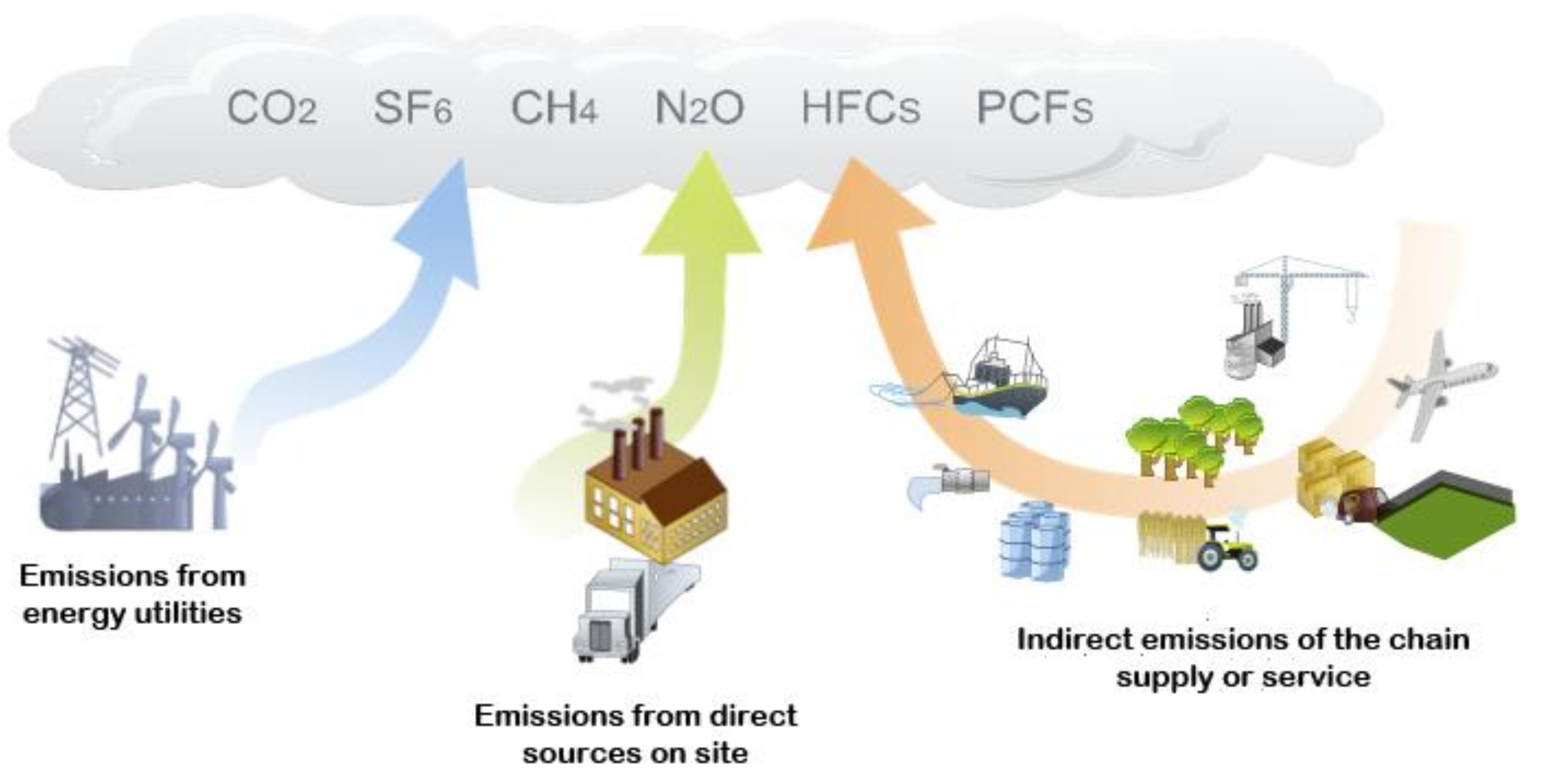
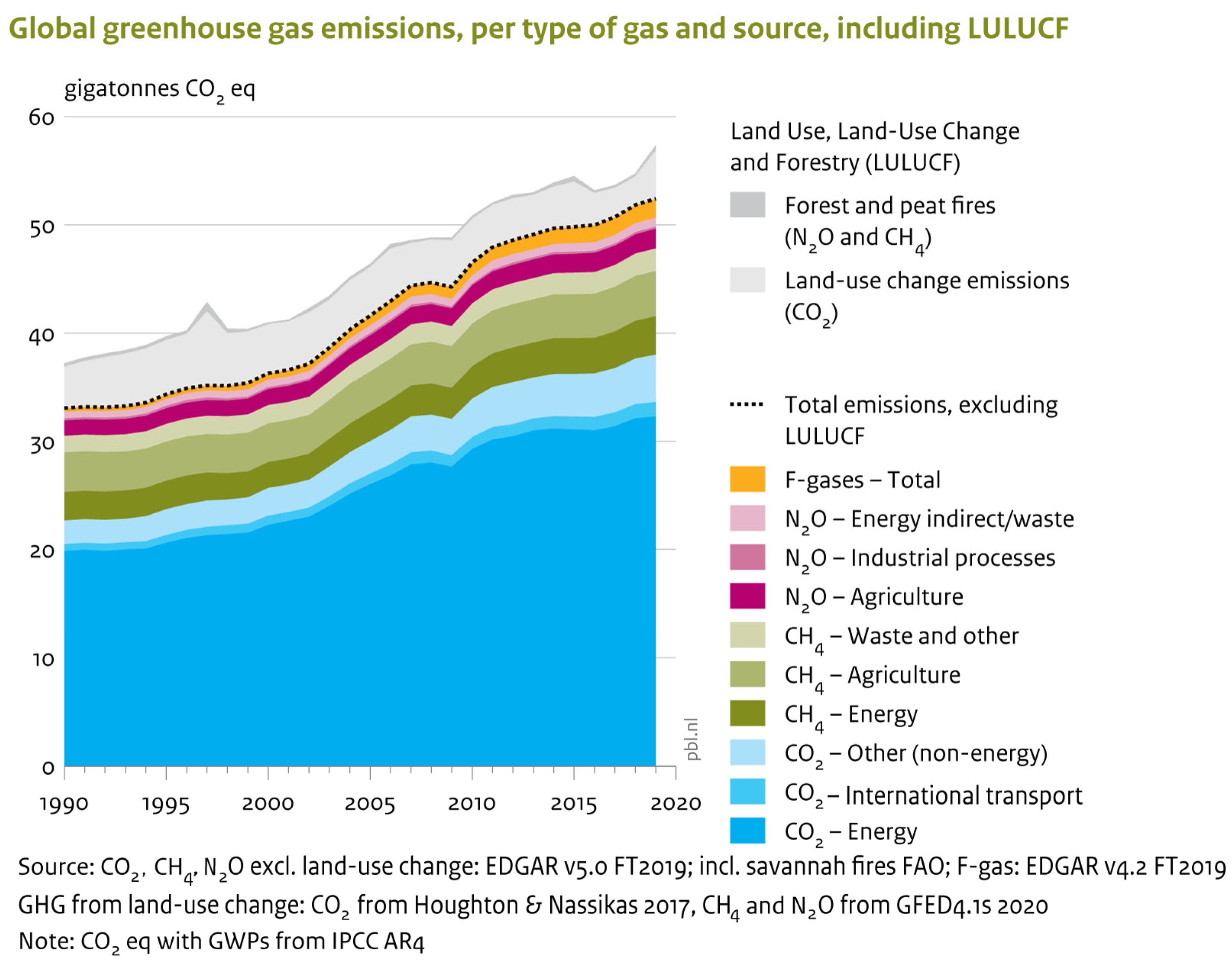

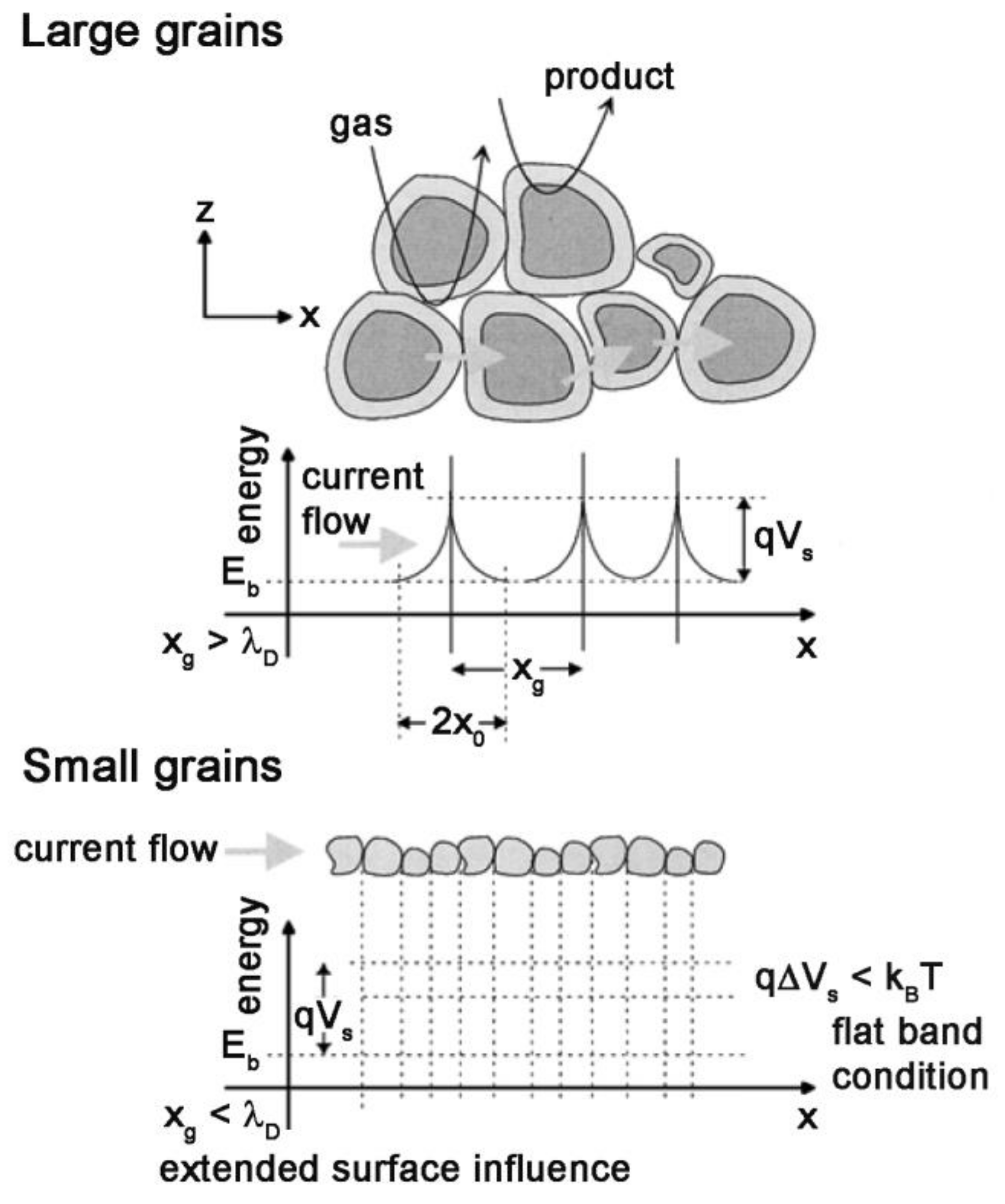


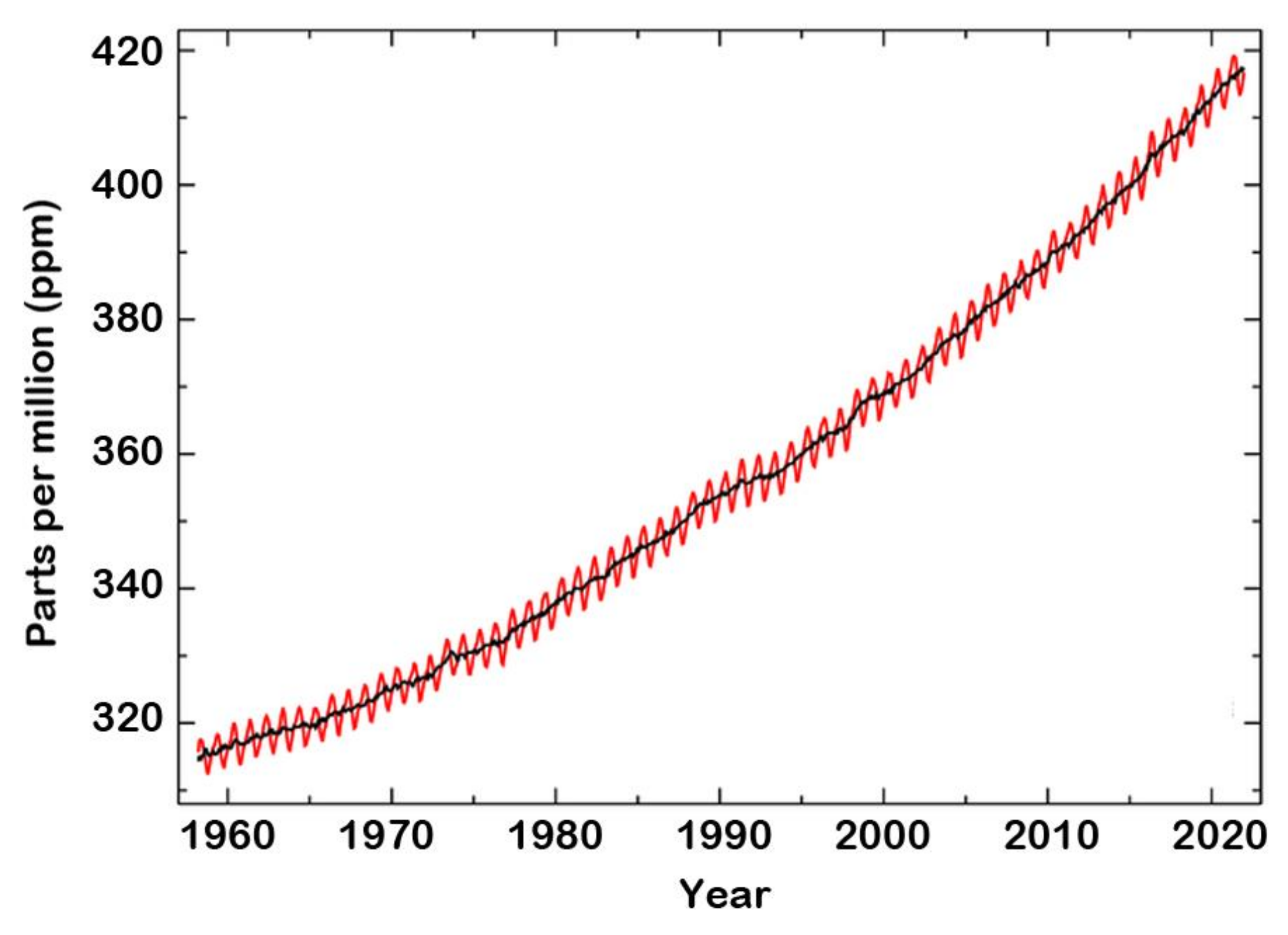


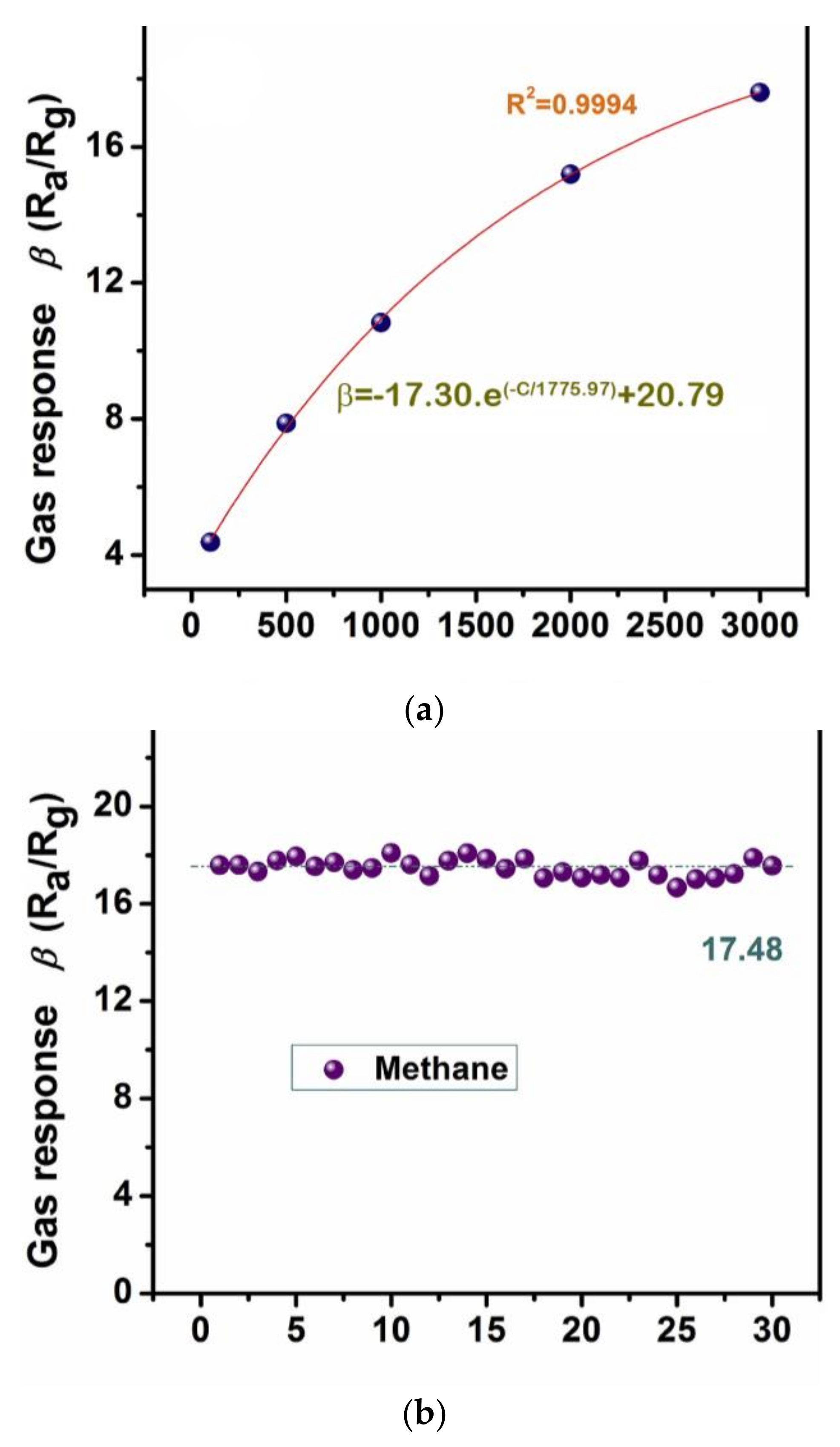
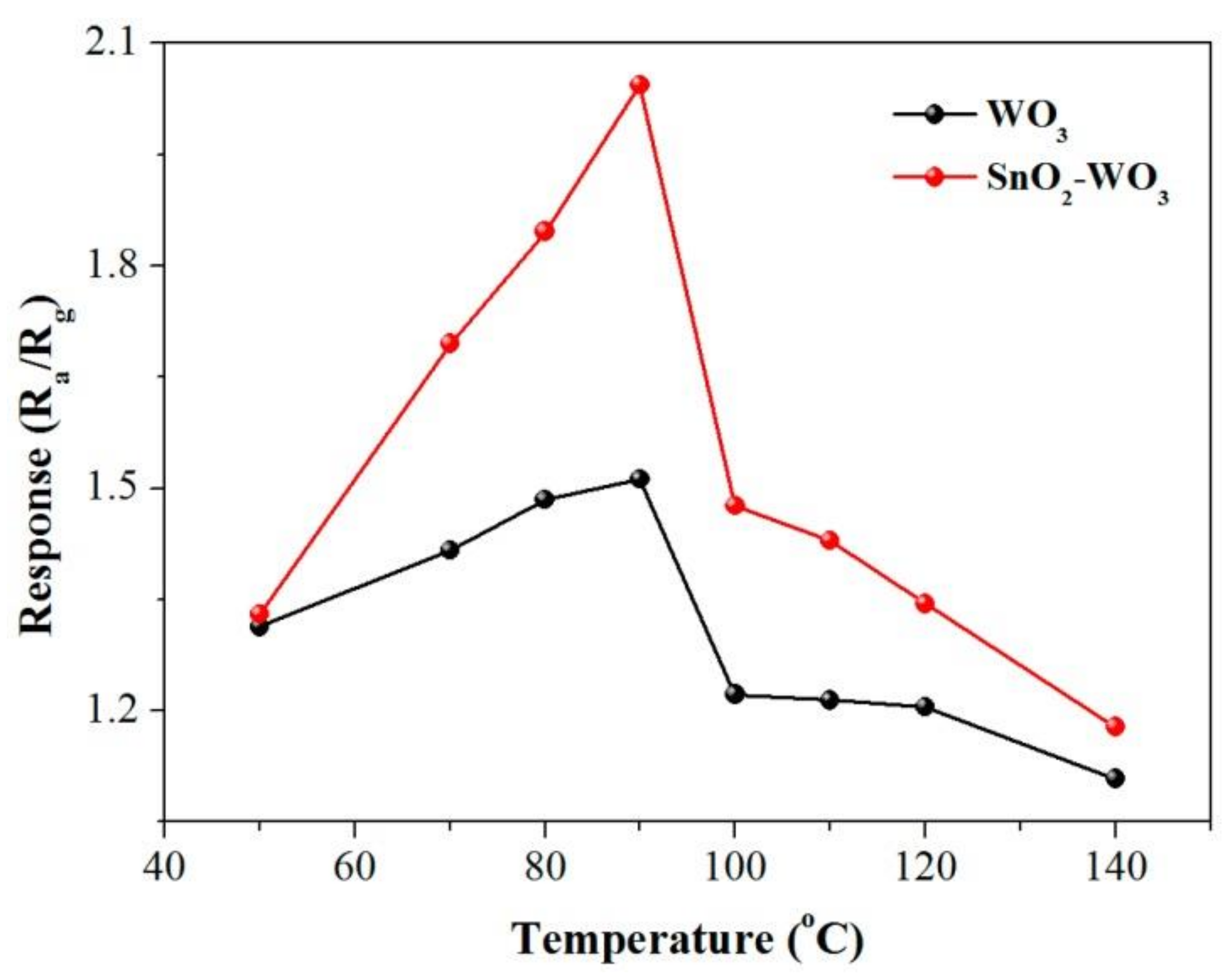
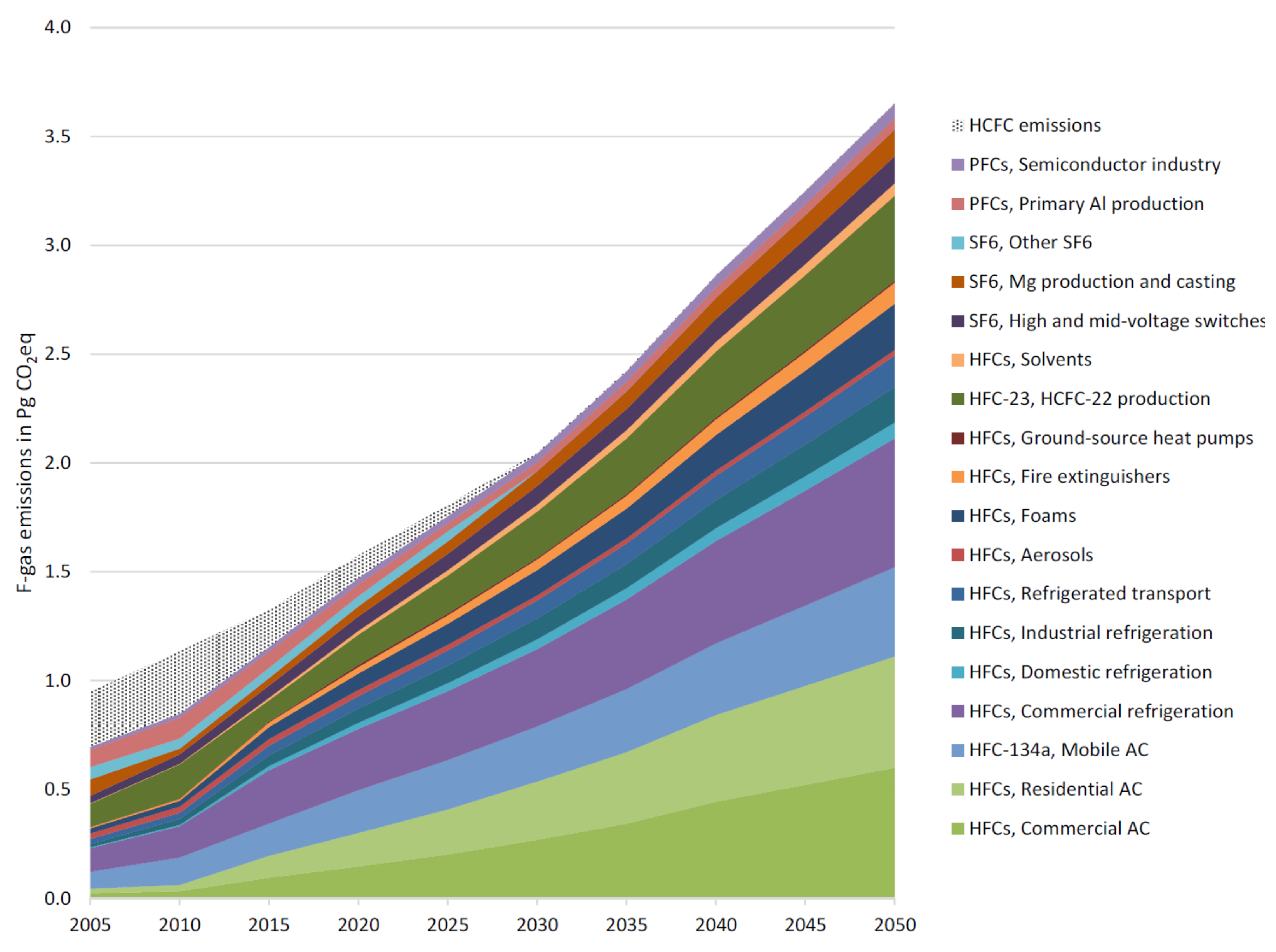
| Greenhouse Gases | Sources/Emission (%) |
|---|---|
| carbon dioxide | deforestation and combustion of fossil fuel/66 |
| methane | wetlands, termites, ruminants, rice agriculture, fossil fuel exploitation, landfills and biomass burning/16 |
| nitrous dioxide | soil and animal manure management, sewage treatment, fossil fuel combustion, and chemical industrial processes/7 |
| CFC12 (dichlorodifluoro methane) | refrigeration systems/5 |
| CFC11 (trichlorofluoro methane) | refrigeration systems/2 |
| other | refrigeration systems, electrical insulator, semiconductors and LCD panels manufacturing, etc./4 |
| Additive | Effect | Nature |
|---|---|---|
| Noble metals (less than 5 wt%) (Pd, Pt, Rh, Ag, Au) | increases response to reducing gases decreases operating temperature decreases response time | catalytic effect change of A/D parameters decrease of O2 dissociation temperature |
| Al2O3, SiO2 | increases sensor response improves thermal stability | decrease of grain size decrease of area of intergrain contact increase of porosity |
| Ag (Ag2O), Cu (Cu2O) | increases response to H2S, SO2 | two-phase system phase transformations during gas detection |
| Fe (Fe2O3) | increases response to alcohols | change of oxidation state |
| Ga (Ga2O3), Zn (ZnO) | increases sensor response | Decrease of grain size Increase of porosity |
| P, B | Improves selectivity | Creation of new phase |
| Ca, K, Rb, Mg | Increases sensor response Improves thermal stability | Decrease of grain size |
| La, Ba, Y, Ce | Improves thermal stability Increases sensor response | Stabilization of grain size (creation of new phase) Decrease of grain size |
| Transition MOXs (<0.5 wt%) (Co, Mn, Sr, Ni) | Increases sensor response Improves selectivity | Catalytic effect Change of electron concentration Change of A/D parameters Change of grain size |
| Type of Sensitive Material | Target Gas/Variation of Resistance | Response |
|---|---|---|
| p-type | reducing/increases | |
| oxidizing/decreases | ||
| n-type | reducing/decreases | |
| oxidizing/increases |
| Material | Structure/Synthesis Method | Target Gas/ Concentration (ppm) | Operating T (°C) | Response (%) | Ref. |
|---|---|---|---|---|---|
| ZnO | thin film/chemical spray pyrolysis | CO2/400 | 350 | 65 | [48] |
| ZnO | nanowires/sol-gel | CO2/15 | 200 | 1.04 | [49] |
| ZnO | nanostructures films/sol-gel | CO2/50 (sccm) | RT | 1.0 | [41] |
| Na/ZnO | spin-coated | 81.9 | |||
| CeO2 | nano pellets/co-precipitation | CO2/800 | 400 | ~33 | [50] |
| Gd/CeO2 | nano pellets/co-precipitation | CO2/800 | 250 | 45 | |
| W/ZnO | nanorods/mechanochemical combustion | CO2/1000 | 450 | ~98 | [46] |
| La/ZnO | nanopowders/hydrothermal | CO2/5000 | 400 | 65 | [51] |
| Ca/ZnO | nanopowders/sol-gel | CO2/5% | 450 | 113 | [52] |
| Ca/ZnO | thin film/wet chemical | CO2/25,000 | 400 | 32 | [53] |
| CuO/BaTiO3 | BaTiO3 spheroids decorated with CuO microleaves/co-precipitating | CO2/1000 | 140 | 52 | [54] |
| CuO | porous film/pneumatic spray pyrolysis | CO2/100 | RT | 1.04 | [55] |
| Zn/SnO2 | thin films/spray pyrolysis | CO2/500 | 310 | 94.4 | [56] |
| ZnO/SnO2 | nanocomposites/screen printing | CO2/70 | RT | ~0.64 | [57] |
| La2O3/SnO2 | nanofibers/electrospinning | CO2/100 | 300 | 5.1 | [58] |
| Au-La2O3/SnO2 | nanofibers/electrospinning, sputtering | CO2/100 | 300 | 10.1 | |
| La/SnO2 | nanofilm/hydrothermal, impregnation | CO2/500 | 250 | 29.8 | [59] |
| CO2/50 | 5.12 | ||||
| CdO | nanowires/microwave-assisted wet chemical | CO2/5000 | 250 | ~1.5 | [60] |
| CdO | rod-like nanostructure/microwave radiation | CO2/5% | 250 | 3 | [61] |
| Sn/CdO | spherical shaped structures/microwave assisted wet chemical | 15 | |||
| CaO/In2O3 | mesoporous/impregnation | CO2/2000 | 230 | ~1.8 | [62] |
| YPO4 | nanobelts/surfactant-assisted colloidal | CO2/200 | 400 | - | [63] |
| La2O3 | microrods thin films/chemical bath deposition | CO2/350 | 250 | 48 | [64] |
| CO2/100 | 4.8 | ||||
| LaFeO3/SnO2 | nanocomposites porous film/sol-gel, hydrothermal | CO2/4000 | 250 | 2.72 | [65] |
| LaFeO3 | nanocrystalline/sol-gel | CO2/2000 | 300 | 2.19 | [66] |
| Pd/La2O3 | thin-film/spray pyrolysis, ionic layer adsorption and reaction | CO2/500 | 250 | 28 | [67] |
| La2O3 | thin-film/spray pyrolysis | 13 | |||
| Cr/TiO2 | thin-film/RF magnetron sputtering | CO2/10% | 55 | ~9 | [68] |
| Al2O3/TiO2 | heterostructure/ALD | CO2/5 | RT | 30.6 | [69] |
| Material | Structure/Synthesis Method | Target Gas/ Concentration (ppm) | Operating T (°C) | Response (%) | Ref. |
|---|---|---|---|---|---|
| TiO2 | nanorods/hydrothermal | CH4/60 | RT | 6028 | [87] |
| CH4/5 | 987 | ||||
| Cd/TiO3 | thin films/magnetron co-sputtering | CH4/500 | 250 | 3.4 | [88] |
| VO2 | nanorods/thermal evaporation | CH4/500 | RT | 35 | [89] |
| V2O5 | nano-flowers/magnetron sputtering | CH4/500 | 100 | 11.2 | [90] |
| nano-rods | 8.9 | ||||
| nano-urchins | 9.1 | ||||
| Au/VO2 | nanosheets/CVD, ion sputtering | CH4/500 | RT | ~70 | [83] |
| SnO2 | nanoparticles/sol-gel | CH4/20,000 | 80 | ~3.5 | [91] |
| SnO2 | quantum dots/sonication assisted precipitation | CH4/5000 | >375 | ~100 | [92] |
| SnO2/WO3 | nanosheets/impregnation | CH4/500 | 90 | ~2 | [80] |
| WO3 | nanosheets/hydrothermal | ~1.5 | |||
| Pd/SnO2 | hollow spheres/adsorption– calcination | CH4/250 | 300 | 4.88 | [93] |
| SnO2 | hollow spheres/progressive inward crystallization routine | 400 | 1.31 | ||
| SnO2/NiO | porousnanosheets/immersion-calcination | CH4/500 | 330 | 15.2 | [94] |
| ZnO/rGO | nanorods, nanosheets/hydrothermal | CH4/100–4000 | 190 | 4.52 | [95] |
| ZnO/NiO | porous nanosheets/hydrothermal, post-treatment | CH4/1000 | 340 | 34.2 | [86] |
| Pd/SnO2 | nanoporous/hydrothermal | CH4/3000 | 340 | 17.6 | [76] |
| NiO/Al | thin films/RF sputtering | CH4/100 | RT | 58 | [96] |
| ZnO | nanoporous/electrochemical deposition | CH4/100 | 220 | ~4.8 | [97] |
| ZnO | nanowalls/thermal evaporation | CH4/100 | 300 | 8.1 | [98] |
| Co/ZnO | nanoparticles/solvothermal | CH4/100 | 140 | 1.05 | [99] |
| α-Fe2O3 | nanoparticles/commercial | CH4/4000 | RT | 1.08 | [100] |
| αFe1.92/Cu0.08O3 | nanoparticles/homogenous co-precipitation | 1.12 |
| Material | Structure/Synthesis Method | Target Gas/ Concentration (ppm) | Operating T (°C) | Sensitivity | Ref. |
|---|---|---|---|---|---|
| BaO/SnO2 | co-precipitation | N2O/300 | 500 | 3 | [38] |
| Sm2O3/SnO2 | 3 | ||||
| PbO/SnO2 | 2.5 | ||||
| Gd2O3/SnO2 | 2.7 | ||||
| SrO/SnO2 | co-precipitation | N2O/300 | 450 | 1.66 | |
| 500 | 4.5 | ||||
| In2O3 | nanowires/carbothermal | N2O/10 | 250 | ~5 | [103] |
| WO3 | nanowires/solvothermal | 25 | |||
| ZnO | nanorods/self-assembly of ZnO nanodots | ~5 | |||
| Au/SnOx | films/L-MOCVD | N2O/100 | 210 | 11.5 | [104] |
| SnO2 | N2O/300 | 450 | 1.66 |
| Material | Structure/Synthesis Method | Target Gas/ Concentration (ppm) | Operating T (°C) | Response (%) | Ref. |
|---|---|---|---|---|---|
| NiO/ZnO | nanoflowers/hydrothermal | SO2, SOF2, SO2F2/100 | 260 | SO2 (33.35) SOF2 (22.25) SO2F2 (36.67) | [108] |
| Au/ZnO | nanowires/hydrothermal | H2S/1 | RT | 38 | [109] |
| In2O3 | nanowires/chemical vapor deposition | H2S/1 | RT | 30.4 | [110] |
| In2O3 | single crystal whisker/carbothermal method | H2S/200 ppb | RT | 47.9 | [111] |
| CuO | nanowires/resistive heating of Cu wires | H2S/10 ppb | 325 | 40.9 | [112] |
| ZnO | flower-like nanorods/ hydrothermal | SO2, SOF2, SO2F2/10 (μL/L) | (SO2)250 (SOF2 and SO2F2) 300 | SO2 (−33.44) SOF2 (−12.47) SO2F2 (−18.06) | [113] |
| TiO2 | nanotube array/anodic oxidation | SO2, SOF2, SO2F2/50 | 200 | SO2 (−76) SOF2 (−7.8) SO2F2 (−5.5) | [114] |
| CuO/WO3 | nanowires/thermal evaporation followed sputter-deposition, thermal annealing | H2S/100 | 300 | 6.72 | [115] |
| TiO2 | nanotube array/anodic oxidation | SO2, SOF2, SO2F2/50 | 110 | SO2 (−74.6) SOF2 (−7.82) SO2F2 (−5.52) | [116] |
| Au/TiO2 | nanotube array/ deposition-precipitation | SO2, SOF2, SO2F2/50 | 110 | SO2F2 (−19.95) SOF2 (−9.97) SO2 (−8.73) | |
| TiO2/NiSO4 | nanofibers/electrospun, hydrothermal | SO2F2/100 | RT | 189 | [117] |
| SnO2 | microspheres/hydrothermal | SO2/30 | 300 | 43.15 | [118] |
| Cu/SnO2 | microspheres/conventionalindirect heating | 275 | 23.37 | ||
| Fe2O3/NiO | nanoplates/solvothermal | H2S/50 | 200 | 26.48 | [119] |
| Pt/TiO2 | nanotube arrays/pulse electrodeposition | SO2, SOF2, SO2F2/50 | 150 | SO2 (8.38) SOF2 (6.11) SO2F2 (17.91) | [120] |
| ZnO/SnO2 | nanofibers/electrospinning | H2S/50 | 250 | 66.23 | [121] |
| WO3/NiO | nanoflowers/hydrothermal | H2S/20 | 160 | 33.34 | [122] |
Publisher’s Note: MDPI stays neutral with regard to jurisdictional claims in published maps and institutional affiliations. |
© 2022 by the authors. Licensee MDPI, Basel, Switzerland. This article is an open access article distributed under the terms and conditions of the Creative Commons Attribution (CC BY) license (https://creativecommons.org/licenses/by/4.0/).
Share and Cite
Dadkhah, M.; Tulliani, J.-M. Nanostructured Metal Oxide Semiconductors towards Greenhouse Gas Detection. Chemosensors 2022, 10, 57. https://doi.org/10.3390/chemosensors10020057
Dadkhah M, Tulliani J-M. Nanostructured Metal Oxide Semiconductors towards Greenhouse Gas Detection. Chemosensors. 2022; 10(2):57. https://doi.org/10.3390/chemosensors10020057
Chicago/Turabian StyleDadkhah, Mehran, and Jean-Marc Tulliani. 2022. "Nanostructured Metal Oxide Semiconductors towards Greenhouse Gas Detection" Chemosensors 10, no. 2: 57. https://doi.org/10.3390/chemosensors10020057
APA StyleDadkhah, M., & Tulliani, J.-M. (2022). Nanostructured Metal Oxide Semiconductors towards Greenhouse Gas Detection. Chemosensors, 10(2), 57. https://doi.org/10.3390/chemosensors10020057







